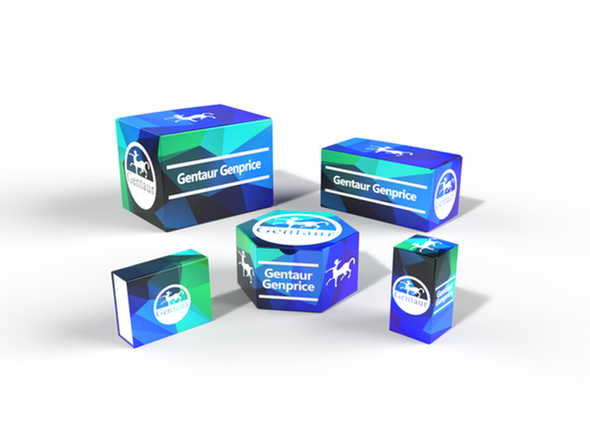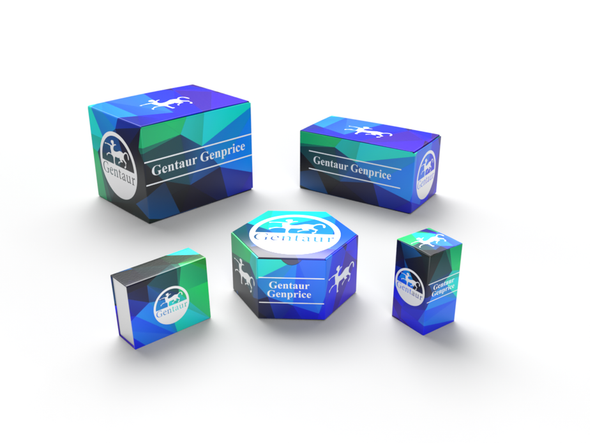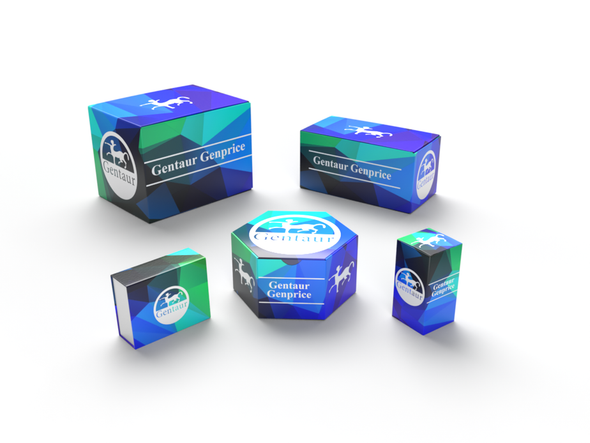Description
Clusterin Antibody | 3856 | Gentaur UK, US & Europe Distribution
Host: Rabbit
Reactivity: Human, Mouse
Homology: N/A
Immunogen: Clusterin antibody was raised recombinant human Clusterin isoform 1.
Research Area: Neuroscience
Tested Application: E, WB, IHC-P, IF
Application: Clusterin antibody can be used for the detection of Clusterin by Western blot at 0.5 - 1 μg/mL. Antibody can also be used for immunohistochemistry starting at 5 μg/mL. For immunofluorescence start at 20 μg/mL.
Antibody validated: Western Blot in human samples; Immunohistochemistry in human and mouse samples and Immunofluorescence in human and mouse samples. All other applications and species not yet tested.
Specificiy: N/A
Positive Control 1: Cat. No. 1303 - Human Brain Tissue Lysate
Positive Control 2: Cat. No. 10-301 - Human Brain Tissue Slide
Positive Control 3: N/A
Positive Control 4: N/A
Positive Control 5: N/A
Positive Control 6: N/A
Molecular Weight: N/A
Validation: N/A
Isoform: N/A
Purification: Clusterin Antibody is affinity chromatography purified via peptide column.
Clonality: Polyclonal
Clone: N/A
Isotype: IgG
Conjugate: Unconjugated
Physical State: Liquid
Buffer: Clusterin Antibody is supplied in PBS containing 0.02% sodium azide.
Concentration: 1 mg/mL
Storage Condition: Clusterin antibody can be stored at 4˚C for three months and -20˚C, stable for up to one year. As with all antibodies care should be taken to avoid repeated freeze thaw cycles. Antibodies should not be exposed to prolonged high temperatures.
Alternate Name: Clusterin Antibody: CLI, AAG4, APOJ, CLU1, CLU2, KUB1, SGP2, APO-J, SGP-2, SP-40, TRPM2, TRPM-2, NA1/NA2, CLI, Clusterin, Aging-associated gene 4 protein, Apo-J
User Note: Optimal dilutions for each application to be determined by the researcher.
BACKGROUND: Clusterin Antibody: Clusterin, also known as Apolipoprotein J (ApoJ) , is a ubiquitous multifunctional glycoprotein that can interact with a broad spectrum of molecules such as complement components, various receptors, and the Alzheimer's b-amyloid peptide. Clusterin expression is increased in Alzheimer's disease brain tissue and clusterin-immunoreactive amyloid plaques are found associated with phospho-tau-positive dystrophic neurites and it has been suggested that clusterin facilitates the conversion of diffuse b-amyloid deposits into amyloid and enhances tau phosphorylation in neurites around these plaques. Other reports show that clusterin expression is decreased in proliferating cells and is upregulated in quiescent and senescent cells, suggesting that it may also play a role in aging and tumorigenesis suppression. Clusterin exists in at least two distinct isoforms.










